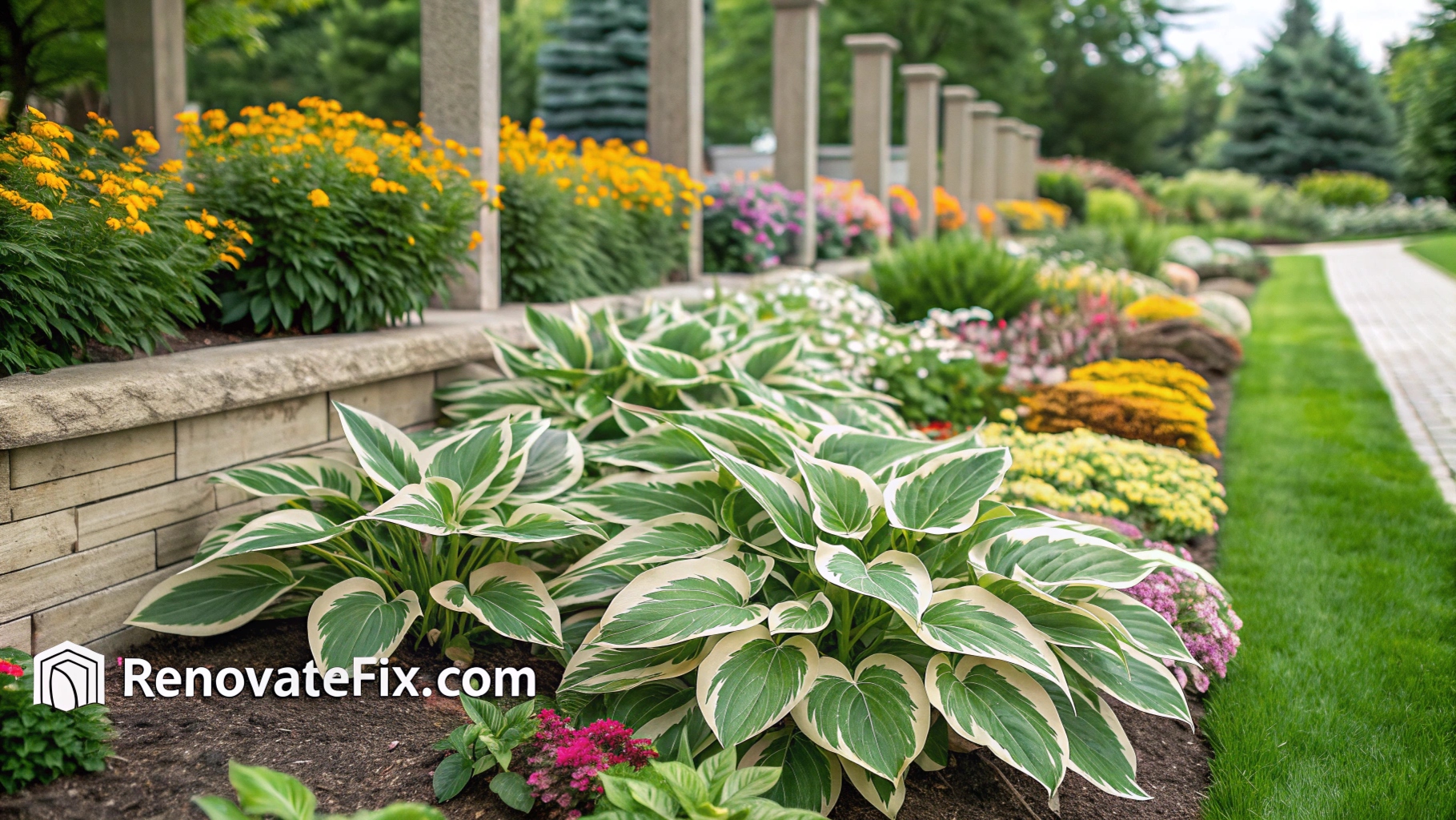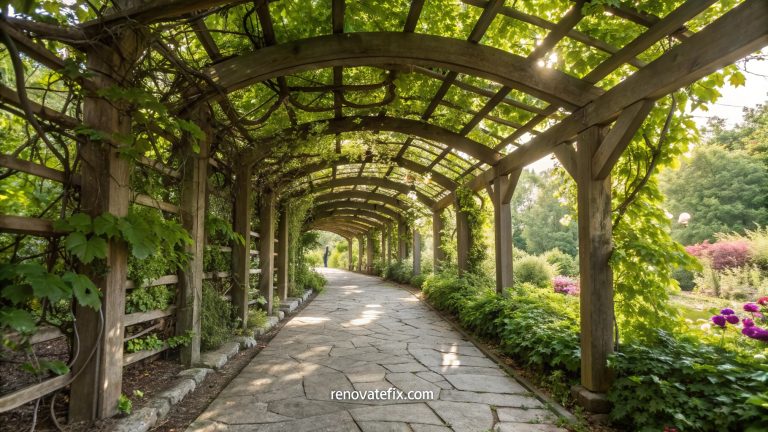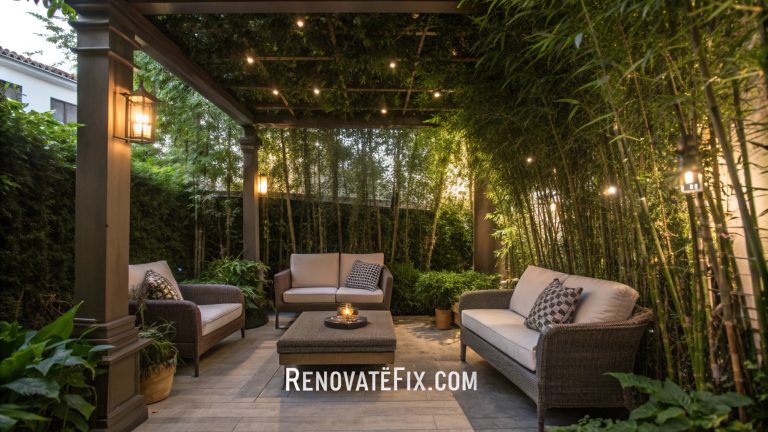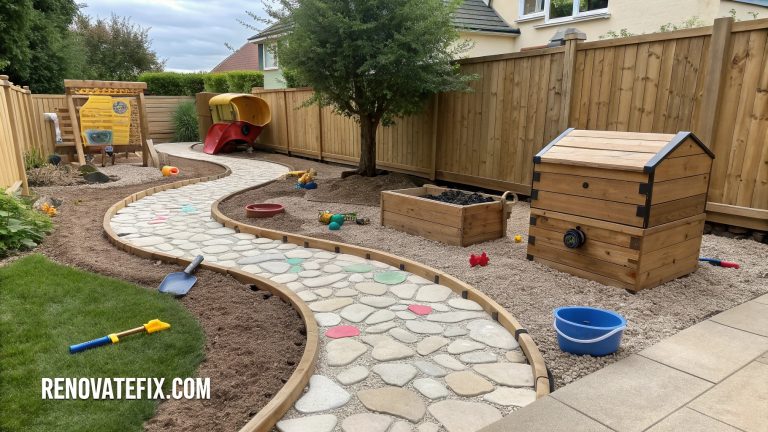20 Stunning Hostas Landscaping Ideas for Your Garden Sanctuary
Welcome to our extensive guide on hostas landscaping ideas that will revolutionize your outdoor spaces.
Hostas remain among gardening’s most versatile performers, offering lush foliage in countless varieties while requiring minimal maintenance.
From tiny miniatures to massive specimens measuring several feet across, these shade-loving perennials bring texture, color contrast, and visual interest to areas where many other plants struggle.
Whether you possess a sprawling estate or modest balcony, hostas adapt beautifully to various settings and complement numerous gardening styles. This collection showcases twenty innovative approaches to utilize these remarkable plants, creating stunning visual impact while solving common landscaping challenges.
Discover how these hardy perennials can become star performers in your garden landscape through these creative applications that gardeners of all experience levels can implement.
1. Woodland Pathway Borders
Lining garden paths with strategically positioned hostas creates an organic, flowing border that guides visitors through shaded areas.

Select varieties with different leaf colors ranging from chartreuse to deep blue-green, placing larger specimens toward the back and smaller ones at pathway edges.
This arrangement maximizes visual depth while maintaining clear sightlines along walkways. Add occasional companion plantings of ferns or astilbe for textural contrast and seasonal flowering interest.
2. Container Garden Displays
Potted hosta arrangements allow for dramatic height variations and color combinations on patios, porches, and decks.
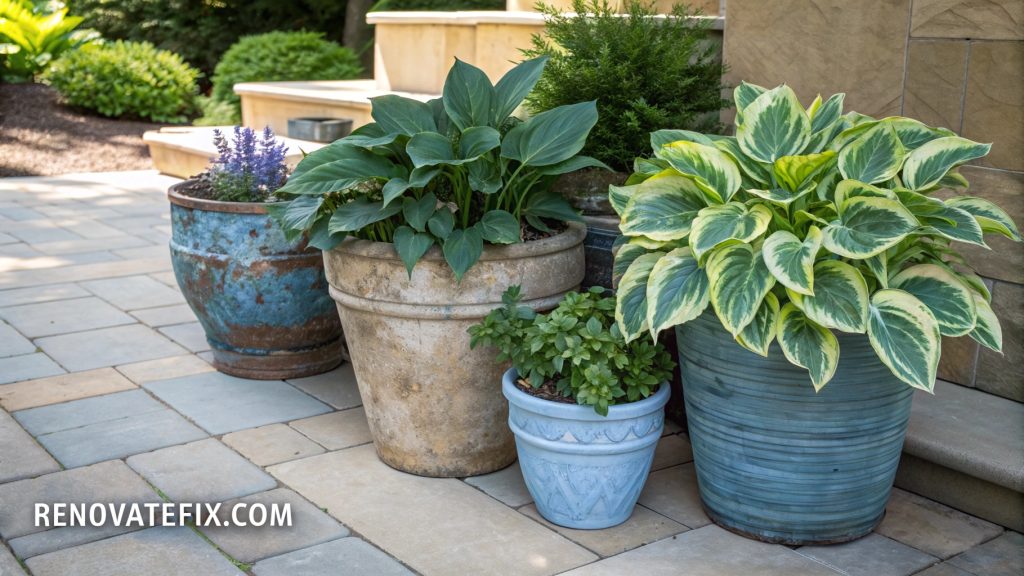
Choose containers with adequate drainage and sufficient depth for root development, arranging multiple varieties in tiers or groupings.
Mix upright varieties with cascading forms to create dynamic visual movement within each container grouping.
Consider metallic, ceramic, or natural stone vessels that complement leaf colorations.
3. Rain Garden Integration
Hostas excel in moisture-rich environments, making them perfect additions to rain gardens or areas with poor drainage.
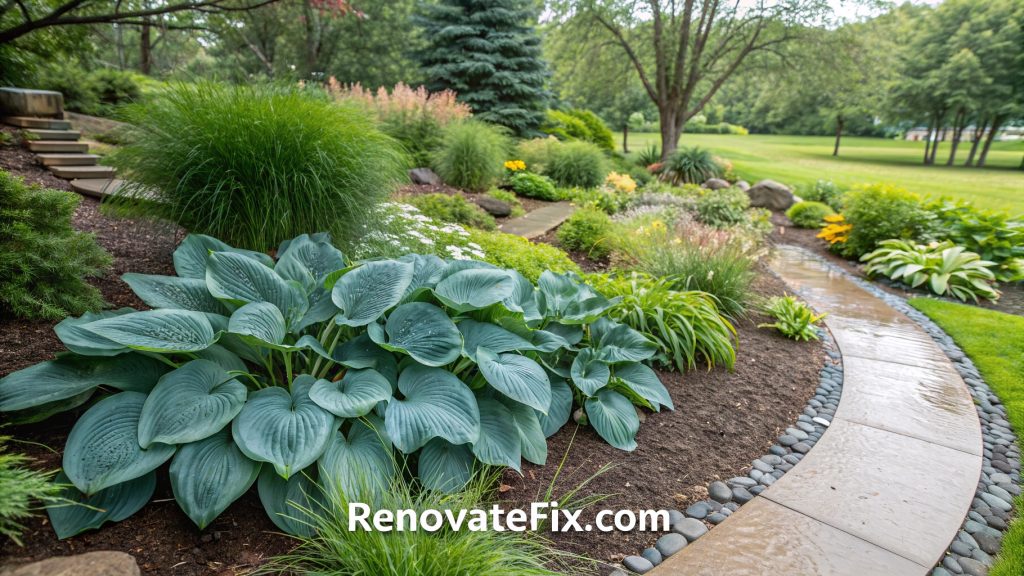
Plant moisture-loving varieties in low-lying sections where water naturally collects after precipitation.
Combine with ornamental grasses and native sedges that share similar water requirements.
This practical solution manages excess water while creating an attractive landscape feature with minimal intervention required.
4. Sculptural Specimen Showcases
Massive hosta varieties become living sculptures when given adequate space to reach full maturity.
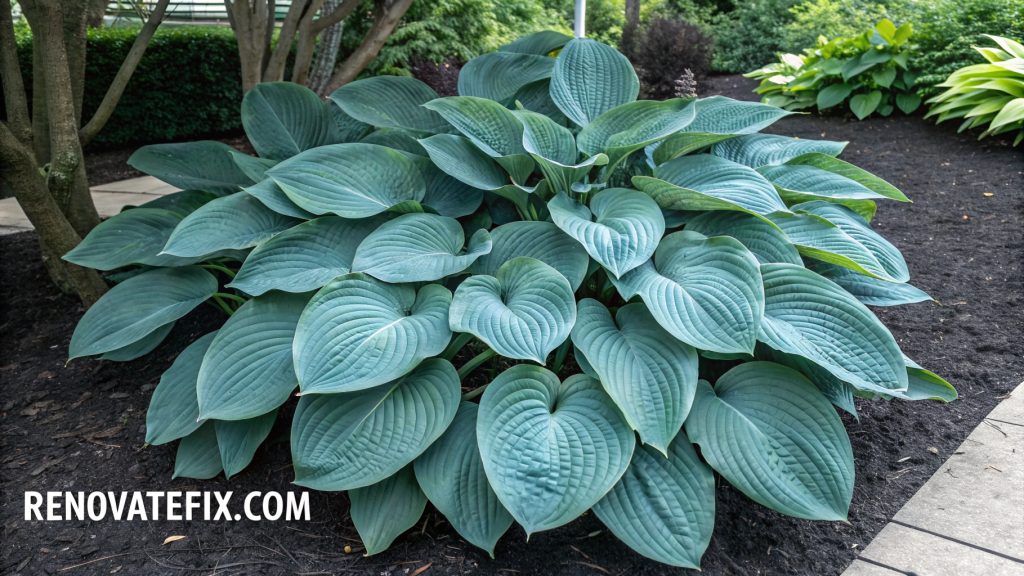
Position statement specimens like ‘Empress Wu’ or ‘Sum and Substance’ as focal points where their impressive dimensions can be appreciated from multiple angles.
Allow minimum three-foot clearance around each plant to showcase its natural growth habit and distinctive leaf patterns. Mulch generously around base to retain moisture.
5. Vertical Garden Accents
Utilize multi-level structures to create vertical interest with hosta plantings in limited spaces.
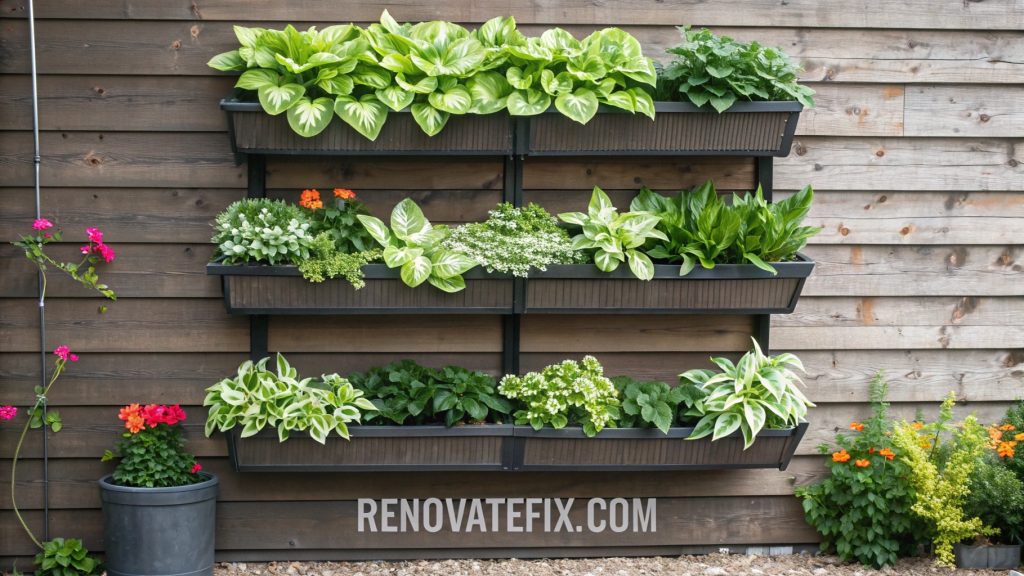
Construct tiered beds, stepped retaining walls, or repurpose vintage ladders as planting surfaces.
Position smaller varieties at upper levels with progressively larger specimens below.
This approach maximizes growing area while showcasing diverse leaf patterns, textures, and colors across different viewing heights. Add complementary shade-loving bloomers for seasonal color bursts.
6. Monochromatic Mass Plantings
Create dramatic impact through mass plantings using hostas within a single color family.

Group multiple specimens of blue-toned varieties like ‘Halcyon’ or ‘Blue Mouse Ears’ for cooling visual effects in hot climates.
Alternatively, establish swaths of chartreuse or gold cultivars to brighten deeply shaded areas.
This approach delivers bold visual statements while maintaining cohesive, professional-looking landscapes through color harmony.
7. Living Mulch Applications
Small hosta varieties function effectively as living mulch beneath trees or shrubs where grass struggles.
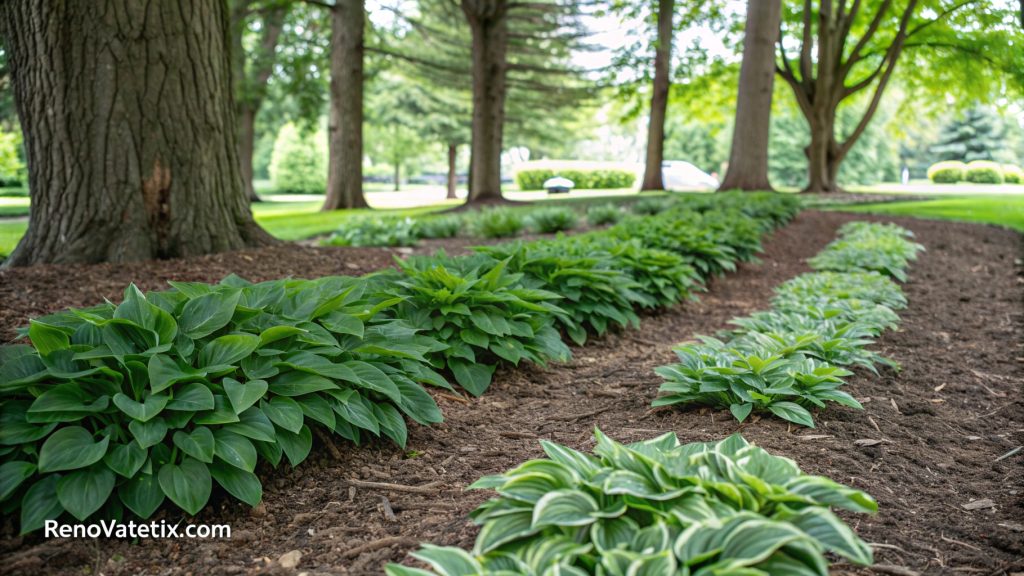
Plant miniature cultivars approximately 12 inches apart to form dense groundcover that suppresses weeds while adding textural interest.
This method reduces maintenance needs, conserves soil moisture, and prevents erosion on sloped terrain. Select varieties with spreading habits for fastest coverage results.
8. Mixed Border Foundations
Establish dependable structure within mixed perennial borders using hostas as foundation plants.
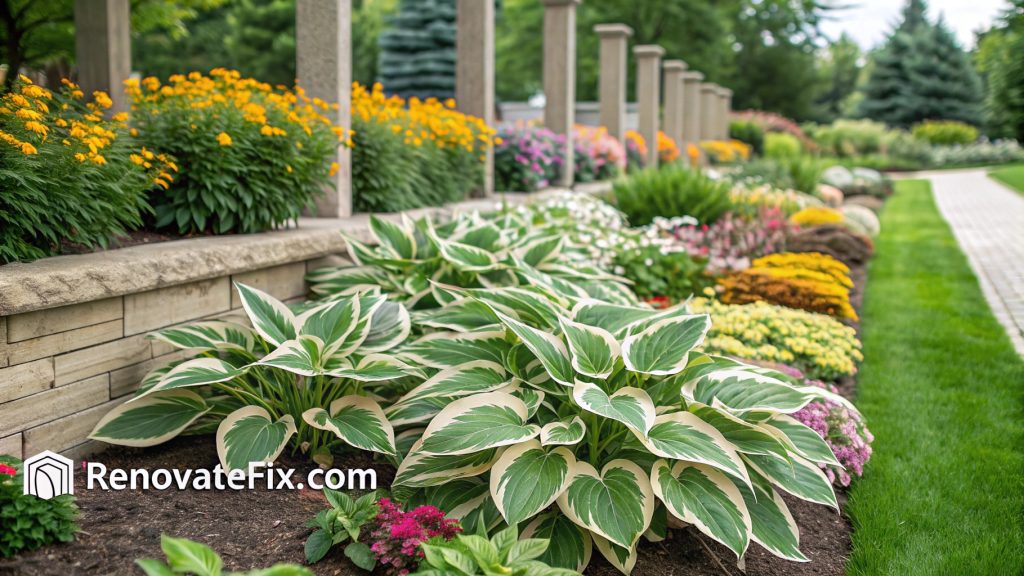
Position medium-sized varieties throughout border compositions to anchor seasonal bloomers and provide continuous foliage interest after flowers fade.
Their reliable presence maintains visual appeal throughout growing seasons while more ephemeral plants cycle through bloom periods. Space appropriately to accommodate mature width.
9. Geometric Pattern Arrangements
Design formal geometric patterns using contrasting hosta varieties for striking visual impact.
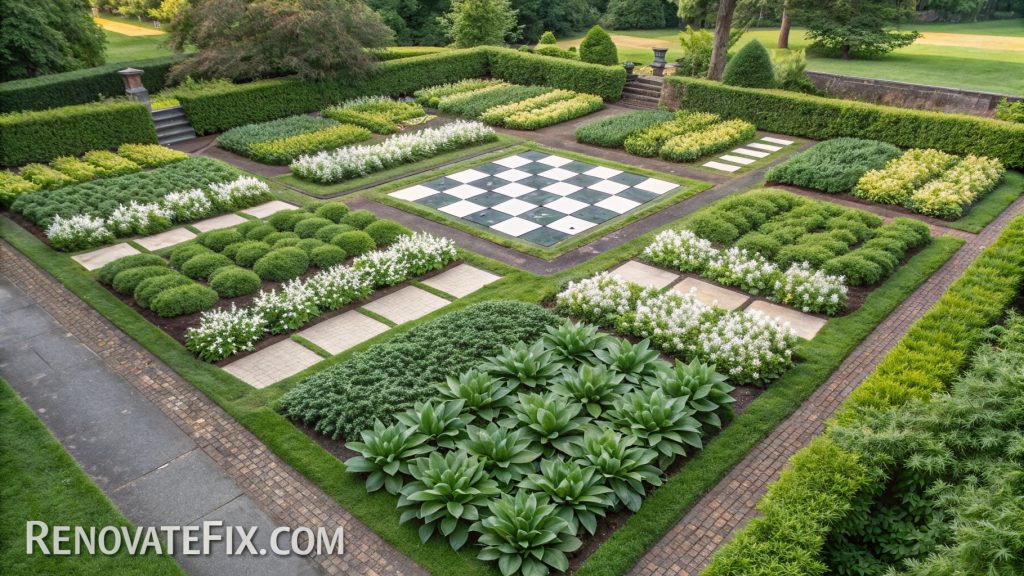
Create checkerboard effects by alternating green and variegated cultivars, or establish concentric circles radiating outward from central focal points.
Maintain clean edges between groupings through regular division and management.
This approach works particularly well in courtyard settings or viewing areas visible from elevated positions.
10. Rock Garden Companions
Integrate small and medium hostas among rock garden compositions to soften hard edges and introduce contrasting textures.
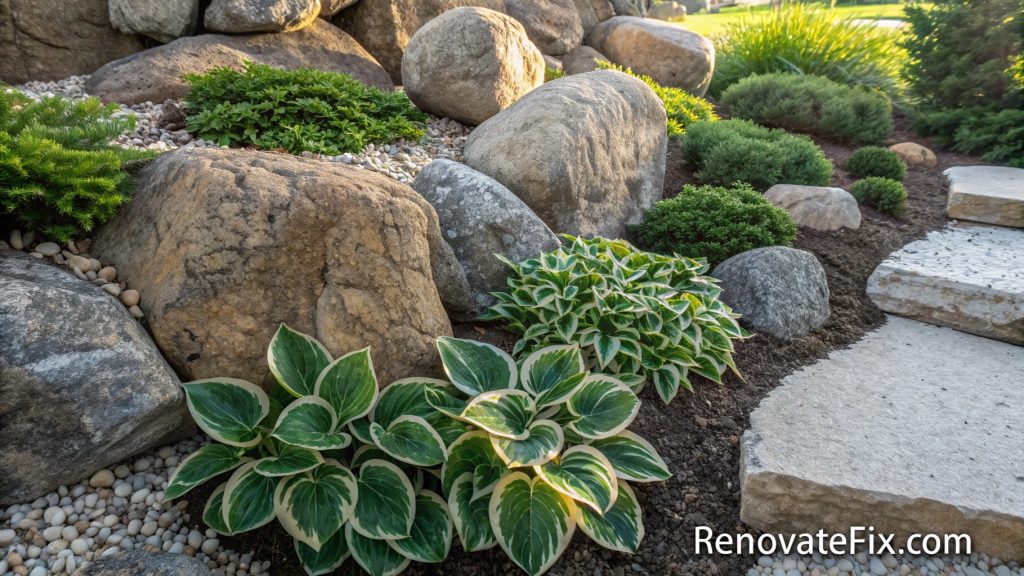
Select compact, drought-tolerant varieties for shallow soil pockets between stones.
Position plants where afternoon shade from rocks provides necessary protection from intense sunlight.
Mini hostas particularly excel in alpine-inspired settings where their diminutive proportions maintain appropriate scale relationships.
11. Water Feature Surrounds
Frame ponds, streams or water features with moisture-loving hosta varieties that thrive in humid microclimates.
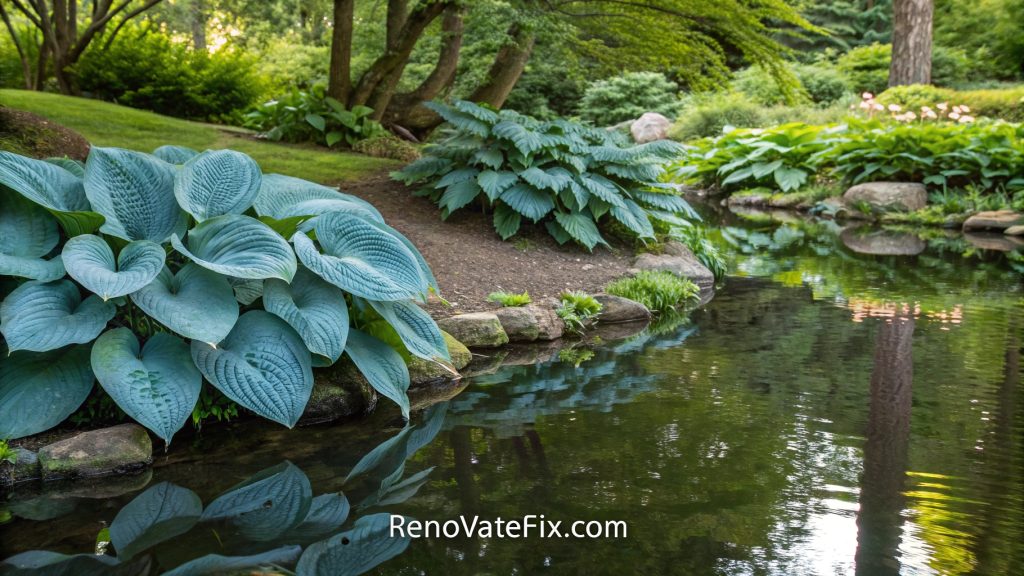
Position plants to allow some foliage to extend slightly over water edges, creating reflective opportunities and visual connection between land and aquatic elements.
Select blue-toned varieties whose colors intensify when reflected in water surfaces. Space adequately to maintain clear views of water features.
12. Gradient Color Progressions
Establish visually flowing landscapes through gradient color arrangements moving from lightest to darkest hosta varieties.
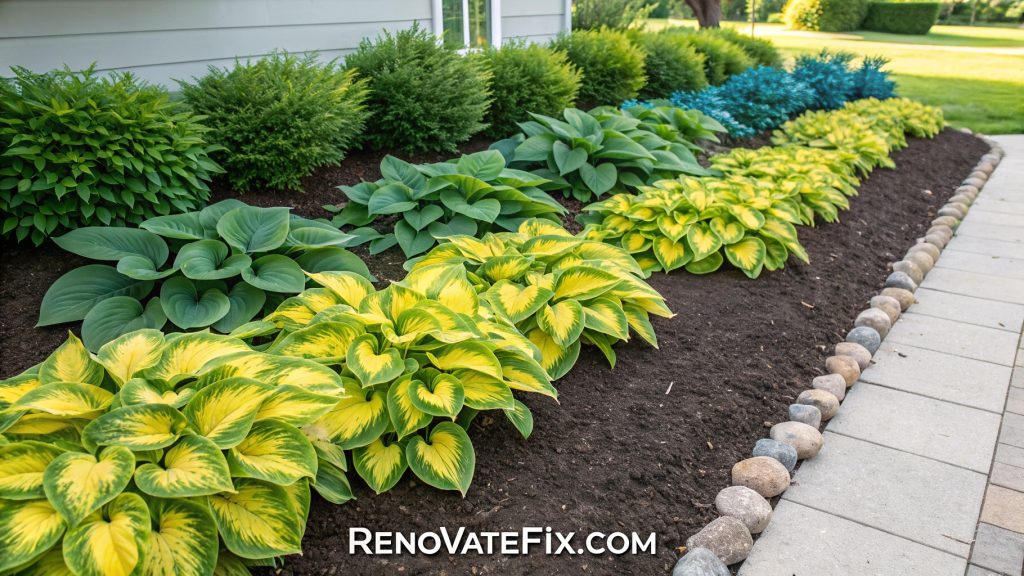
Begin with bright gold or chartreuse cultivars, transitioning through medium greens into deep blue-green specimens across a defined garden space.
This color progression creates natural movement guiding viewers through garden spaces while maintaining cohesive design aesthetic through related plant forms.
13. Fragrant Garden Sections
Incorporate fragrant hosta varieties to add sensory dimensions beyond visual appeal.
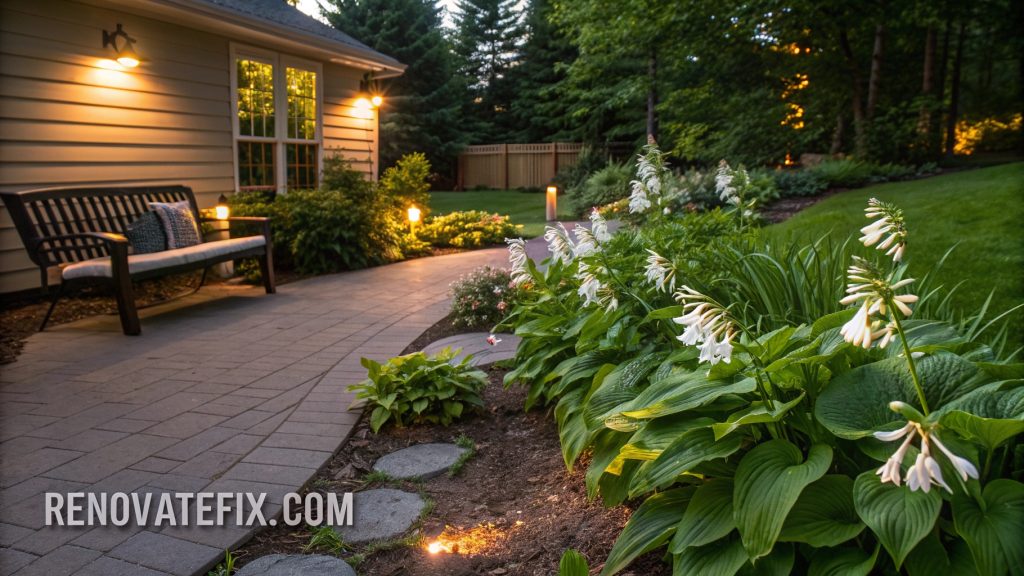
Plant scented cultivars like ‘So Sweet’ or ‘Guacamole’ near seating areas, windows, or evening gathering spaces where their sweet perfume carries on humid air.
Position plants at nose height when possible by utilizing raised beds or container elevations.
Group multiple fragrant varieties together to intensify olfactory impact during blooming periods.
14. Four-Season Structure
Select hostas with outstanding winter dormant characteristics to maintain garden interest year-round.

Choose varieties whose dried leaf structures and flower stalks remain attractive through early winter months.
Position plants where low winter sunlight highlights dried elements against snow backgrounds.
Additionally, early-emerging varieties provide first spring garden moments before other perennials activate.
15. Terraced Display Systems
Maximize sloped terrain through terraced planting systems showcasing hostas at multiple viewing levels.
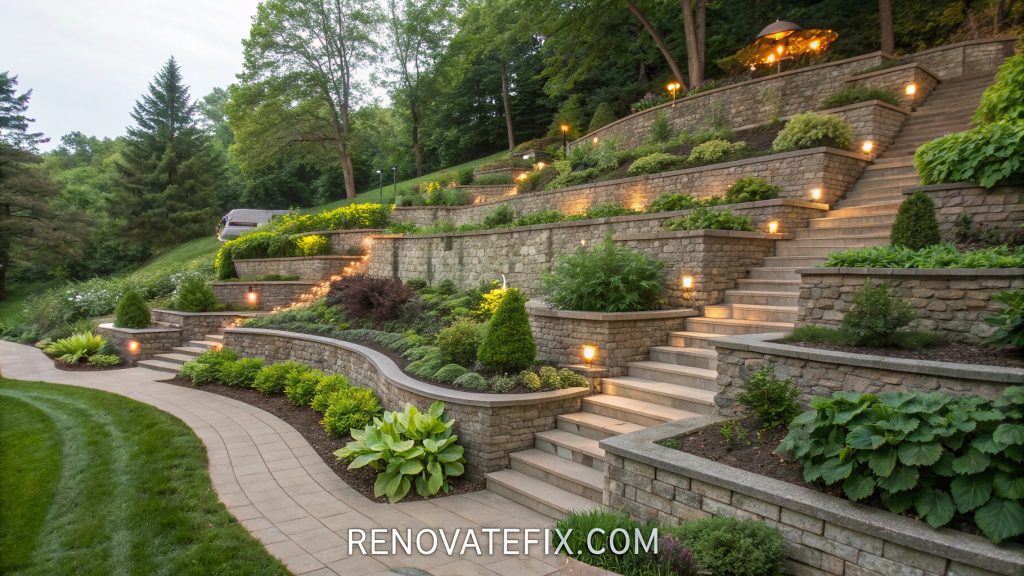
Construct stone, timber, or concrete retaining structures that create level planting pockets down hillsides.
Position largest varieties at lowest levels with progressively smaller specimens ascending upward.
This approach creates dramatic presentations visible from distance while solving erosion challenges on problematic slopes.
16. Cut Flower Garden Sources
Cultivate hostas specifically for cut foliage production to complement floral arrangements.
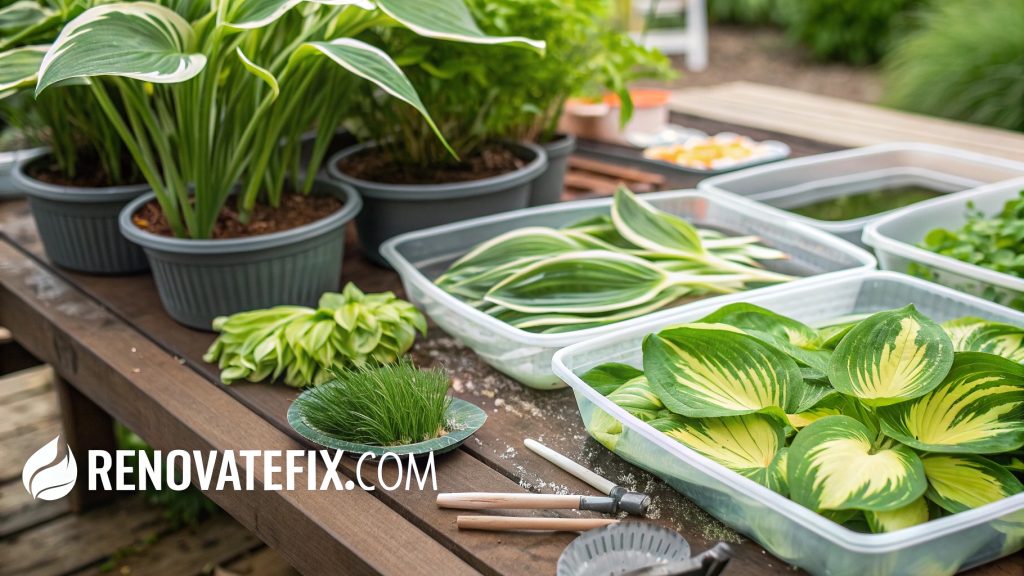
Dedicate sections to varieties with exceptional vase life and distinctive leaf characteristics.
Harvest outer leaves during morning hours when hydration levels peak, selecting stems with optimal maturity for longest display potential.
Cut leaf stems at soil level using sharp, clean tools to minimize plant stress and disease vulnerability.
17. Fairy Garden Miniatures
Craft enchanted miniature landscapes utilizing smallest hosta varieties as proportional “trees” within fairy garden compositions.
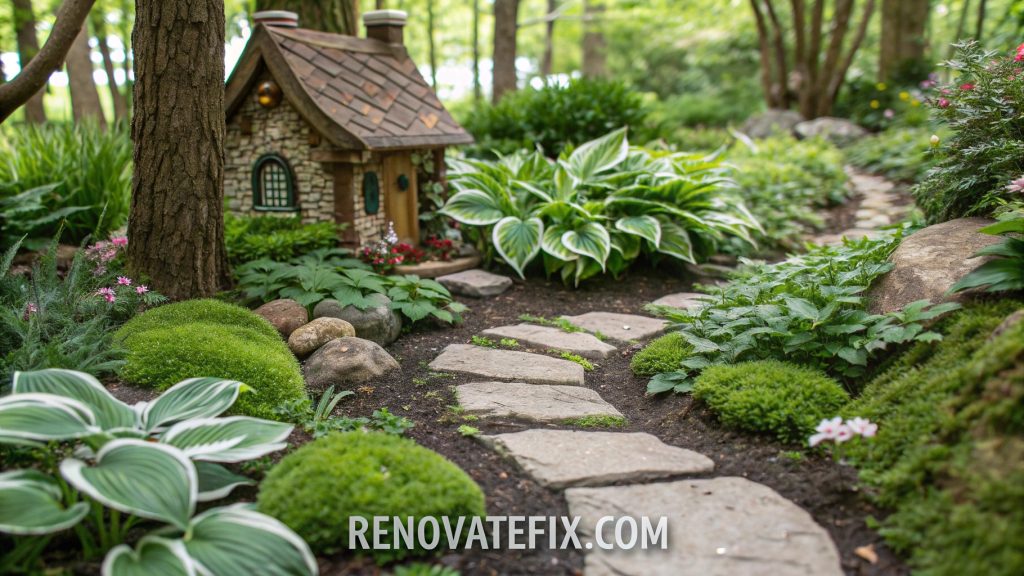
Select tiny cultivars measuring under six inches at maturity to maintain appropriate scale relationships with decorative elements.
Position plants to create canopy effects over miniature structures or pathways.
This application particularly appeals to young gardeners while introducing fundamental design concepts through playful implementation.
18. Night Garden Illumination
Highlight light-colored or variegated hostas in evening garden settings where their foliage captures and reflects moonlight or landscape lighting.
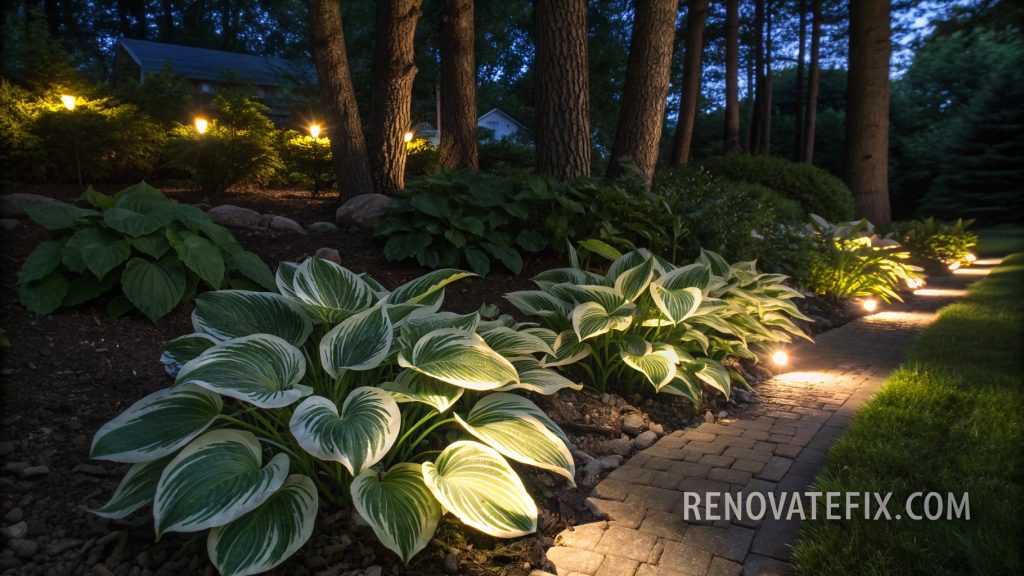
Position white-edged or gold varieties where they receive indirect illumination after sunset.
Group reflective cultivars near seating areas or viewing windows for extended enjoyment beyond daylight hours.
Uplight specimens from below to maximize dramatic shadow patterns on nearby surfaces.
19. Edging and Boundary Definitions
Employ consistent hosta varieties to establish clear visual boundaries between garden rooms or landscape sections.

Select compact, slow-growing cultivars with stable growth habits for long-term definition without frequent maintenance.
Plant specimens at equal spacing to create rhythmic patterns along transition zones.
This application provides subtle yet definitive spatial organization without imposing barriers to movement or sightlines.
20. Urban Oasis Plantings
Maximize limited urban growing spaces through strategic hosta applications in challenging city environments.
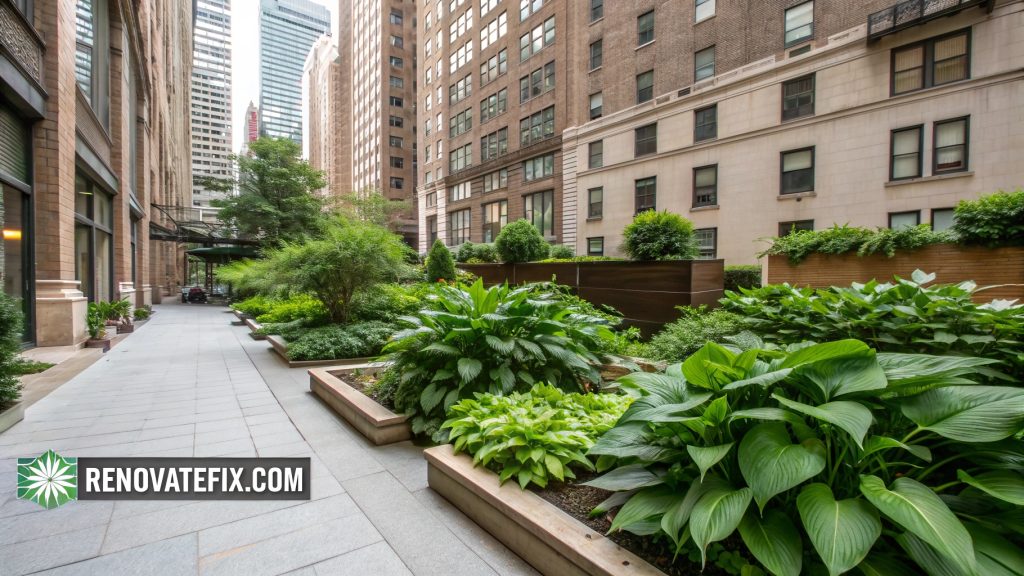
Utilize shade-tolerance advantages beneath building overhangs or northern exposures where sun-loving plants struggle.
Layer multiple varieties in tight arrangements that mimic natural forest floor communities.
This approach creates cooling micro-climates within urban heat islands while providing psychological benefits through connection with natural elements.
Conclusion
The versatility of hostas in landscaping applications remains unmatched among shade-tolerant perennials.
These twenty distinctive approaches merely scratch the surface of possibilities these remarkable plants offer garden enthusiasts.
Whether addressing challenging growing conditions, maximizing limited spaces, or creating stunning visual displays, hostas deliver reliable performance while requiring minimal maintenance.
By considering mature dimensions, growth habits, and specific site conditions when selecting varieties, gardeners ensure successful implementation of these landscaping concepts.
Experiment with combinations that resonate with your personal aesthetic while solving practical challenges within your outdoor spaces.
Remember that patience allows hostas to reach their full potential over successive growing seasons, rewarding gardeners with increasingly impressive displays as plants mature.
Begin with one concept that addresses your most pressing landscape need, then gradually expand your hosta collection as you discover the endless possibilities these garden workhorses provide.

